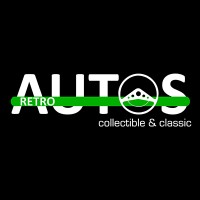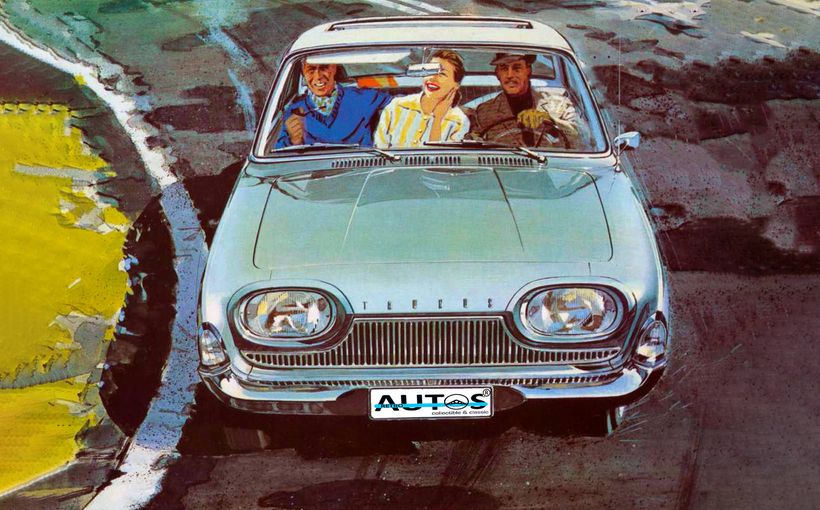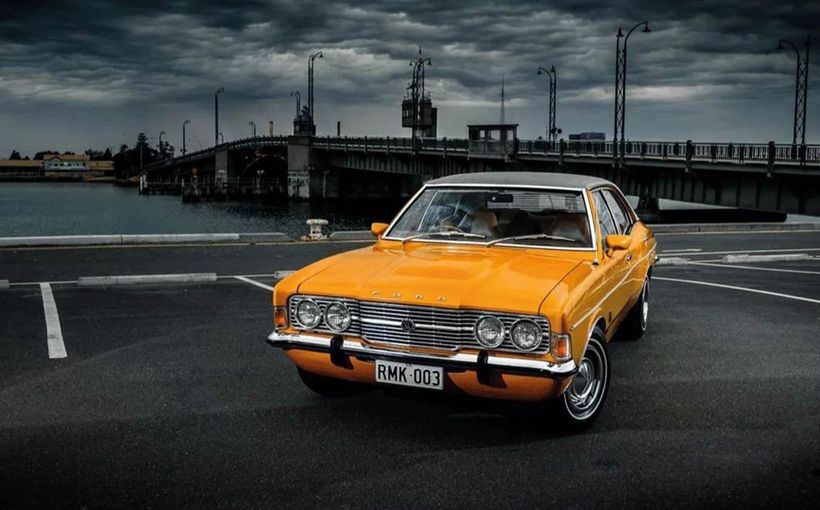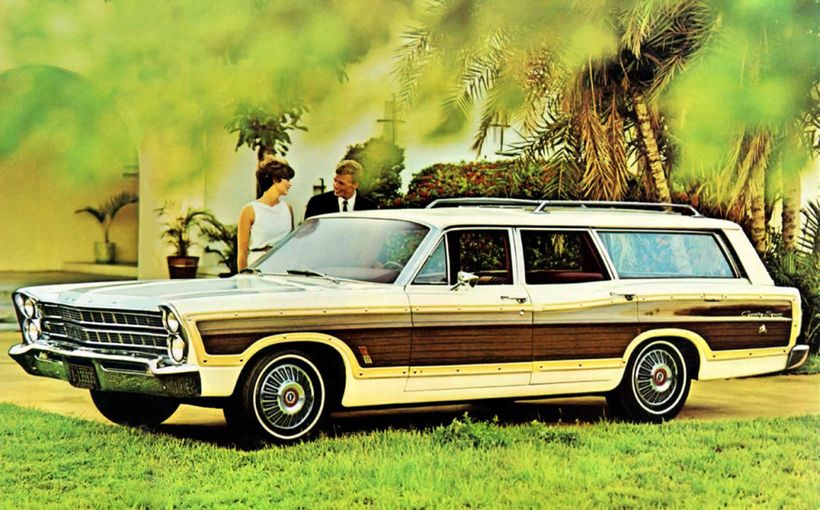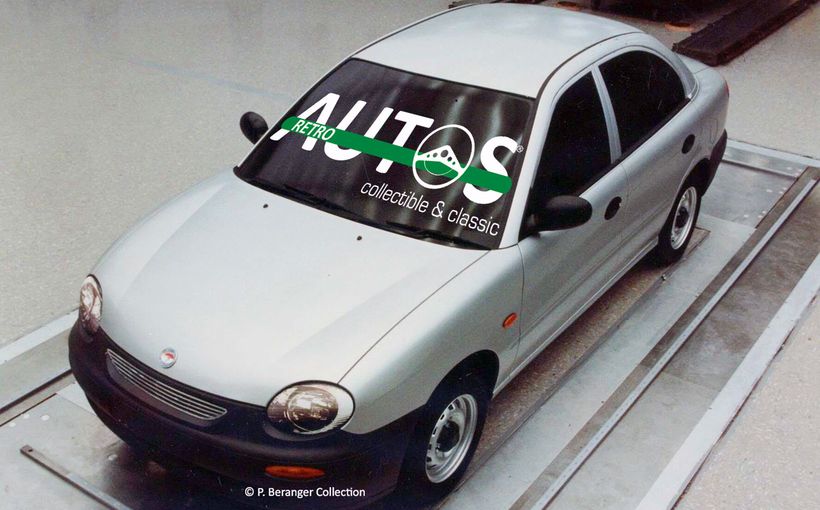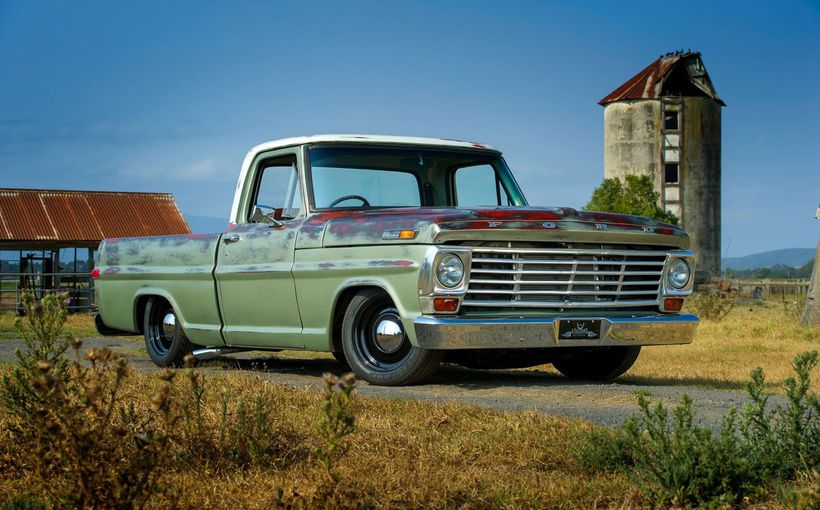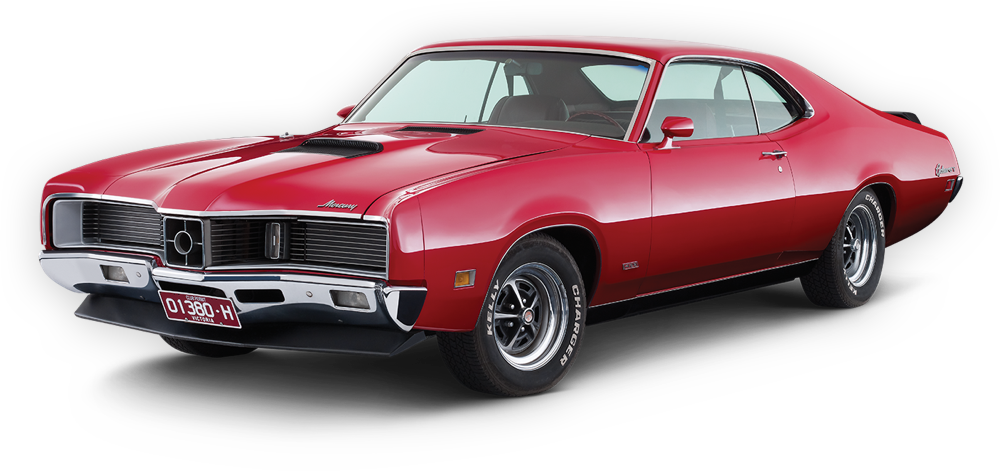Retroautos: ZC Fairlane from Design to Driveway

Ford’s Fairlane has always held a special place in Australian automotive history. Owning a Fairlane was a symbol of success and it conveyed that message to anyone who saw it in your driveway.
This is the story of how the ZC Fairlane went from design to driveway.
The Fairlane name was first used on the 1955 American Ford to describe its most luxurious model. The name paid homage to Henry Ford’s extensive 530 hectare estate and 56 room mansion, Fair Lane, located along the River Rouge, in Dearborn, Michigan. The house was constructed between 1913 and 1915, just eight years after the first Model T was released. Its size, compared to the series of the residences in which the Ford family lived previously, provides an insight into how quickly Ford accumulated wealth thanks to the Model T.
The Fairlane badge debuted in Australia in 1959 as the epitome of the big Yank Tank, because that’s what it was. As Ford Australia’s top-of-the-range offering, it took over from the much respected Customline. It had size, width and bulk aplenty. In the USA, however, the model had already been relegated to a mid-level status. The Galaxie now sat atop the American hierarchy of Ford’s affordable full sized cars.


For 1962 the Fairlane was downsized in the USA to an “intermediate” sized car. It was an immediate success with 300,000 sales in the first year. No doubt its new “thin wall” 260 cubic inch/4.3 litre V8 engine helped attract buyers. The engine would become the bedrock of Ford’s Total Performance strategy in years to come and is now as iconic as the Chevrolet “small block”.
The smaller Fairlane caught GM off guard. It took them another two years before they could adequately counter Ford’s dominance in the intermediate market segment. By that time Ford had sold in excess of 640,000 Fairlanes. It would not be the last time a Fairlane left GM wrong footed.
The local car followed the US design. Ford Australia chose not to assemble the 1961-1963 American Galaxie, largely because of price and local content issues. Consequently, the Fairlane became the company’s largest sedan.


When the Galaxie appeared in Australia in 1964, the Fairlane resumed its “intermediate” status, slotting between the big car and the Falcon Futura, yet its price was not much less than the Galaxie. I remember a school mate’s father had ordered a 1964 Fairlane, only to change the order to a Galaxie when he saw the bigger car.
When the XP Falcon Fairmont was released in 1965 the Fairlane was taken off the model list. Or so everyone thought.
In March 1967 the first locally developed Ford Fairlane, the ZA, was unveiled. Many people assumed it was based on the 1966 American Fairlane, because it looked similar. That was only partly true.


While the body shapes were similar and both cars sat on a 116inch (2946mm) wheelbase, there were differences. The local Fairlane was actually a stretched local Falcon. Its development occurred after the Falcon’s. The US Falcon, on the other hand, was a shortened US Fairlane.
In fact, when the US Fairlane and Falcon were being developed in late 1963 the Fairlane’s styling and platform engineering needs were met first, then they were applied to the Falcon.
Speaking to the automotive editors of Consumers Guide, David Ash, one of Ford’s top designers, revealed that when the Mustang was in its final stages of development in 1963 the Fairlane’s development was slowed. After the Mustang’s release, attention returned to the Fairlane, and then the Falcon.


Ford’s product planners and designers wanted the 1966 Fairlane to take on the shape of a slightly smaller Galaxie, particularly the stacked dual headlights encased by long front fenders. At the rear of the car, squared-off fenders were combined with rectangular vertical lights, breaking a Ford tradition of circular tail lights.
The US range comprised two and four door sedans, station wagon, utility (from 1967), two door hardtop semi-fastback coupe and a convertible. Also offered were GT and GTA variants in the coupe and convertible.
Mercury matched the Fairlane model for model with its Comet range, except for the ute. They were better equipped and price a little higher than the Fairlane.


Both brands offered an extensive array of engines and transmissions. Base power started with a 200 cubic inch/2.8 litre six and went all the way to the 390 cubic inch/6.4 litre V8. And, if you knew someone at Ford, you might just be able to convince them to help you with your order form and have your Fairlane/Comet fitted with the 427 cubic inch/7 litre V8.
In the USA, the mid-sized Fairlane and Comet were positioned as cars for families and young couples who wanted more than a cheap Falcon, but could not stretch their budgets to a bigger Galaxie or Mercury. The GT and GTA were aimed at GM’s and Chrysler’s muscle cars.


In Australia, the situation was very much the opposite. The Fairlane was unashamedly marketed as a luxury car. Owning a Fairlane conveyed a very visible image of personal success. It was an overt status symbol.
When it first considered the ZA Fairlane, Ford Australia was forced to take a different development path to the Americans. David M. Ford, (no relation) who was Ford Australia’s Chief Engineer, spent his early career in the product planning department.
He recalls the initial ideas for a locally built long wheel base luxury sedan. “Cost minimisation was essential because of Australia’s smaller market size, so that influenced what we could do,” he says.
“We had a plan for an XR-L as we called it. This was a long wheel base XR Falcon, hence the ‘L’. The Product Planning Manager, John Murray, had identified through market research, that there was reasonable confidence in the existence of a profitable market for a biggish, premium priced luxury car, but not so big and not as expensive as the Galaxie. The XR-L featured unique rear end sheet metal and horizontal dual headlights.”
The project had not got off the ground because of the estimated costs. David continues the story: “The thing about the XR-L was that the cost of investing in the tooling for the unique sheet metal was a major risk at the time, as the achievable sales volume had yet to be proved. We also looked at importing the US Fairlane but that was also too expensive with exchange rates, local content rules and the need to use as much of the local XR Falcon platform as possible to spread costs.”
Then David had an idea. Grabbing a bundle of brochures of the XR Falcon, US Fairlane and XR-L photos he took a pair of scissors and started to cut everything up. To a Fairmont centre section, he added the XR-L twin headlights and grille. US Fairlane rear fenders were pasted over the back of the Fairmont. The result looked good so he had the company photographer, Nick Smales, take a blend of styling photos and blow them up into a two by three metre image. He walked into a product planning meeting and put the photo on the wall and said “Let’s call it a Fairlane.”


The engineers stretched the existing Falcon wheelbase to 116 inches (2946mm) and re-designed the floor, which allowed the rear seat to be moved backwards creating extra rear leg room. The American Fairlane’s rear fenders were found to blend seamlessly and visually balanced the XR-L front end.
When the accountants added up the costs and estimated the potential profits Bill Bourke, Ford Australia’s Managing Director, reviewed the project and the risks. In typical Bourke style he did not mull over the decision for very long. If his team said it would sell well, then that was good enough for him. He gave the project the green light.
And so was created the Australian long wheel base luxury sedan category, one that would endure for another half a century.
The ZA came in two models: the V8 powered 500 and the no frills six cylinder Custom. With its disc brakes, Fairmont interior and Lincoln-esque dashboard the 500 shouted out its prestige. The Custom was pitched to the hire car crowd or those wanting a big car with a basic Falcon interior.
The ZA was succeeded by the ZB in March 1968. Although changes were minimal buyers still preferred it above Holden’s long-booted Brougham and Chrysler’s VIP. Neither could match the Fairlane’s imposing presence.

Preliminary work started on the ZC in the same month that the ZA was released. Product planners wanted the ZC to have even greater visual differences over the Falcon and the ZA and ZB.
Buyers paid big money for a Fairlane and they deserved to be rewarded for having spent the extra cash with a car that looked substantial and had significant kerb appeal. The challenge for designers Jack Telnack and the late Brian Rossi was to create that noticeable difference and yet still work within the confines of what they had developed for the XW sedan. (See Retroautos October 2020 edition for the story of the XW’s development. Here’s a LINK.)

It would mean that the Fairlane would absorb the XW’s new roof and C pillars, with its recessed rear window, and carry over doors and A pillars. That left Jack and Brian with the body trim, front end and rear end to work with. The XW’s open mouth Mustang-style grille and front end was not the right image for the Fairlane. Something more prestigious was needed.
To achieve a distinctive and robust appearance, Galaxie-style-sharp edged fenders, grille and stacked headlights were crafted onto the front. Wrap around tail lights replace the rectangular units of the ZA/ZB. The whole package looked imposing and the design theme was confirmed.


Reverting to stacked headlights at a time when they were being phased out in the USA (on Ford, Mercury, Cadillac and Pontiac) might seem like a strange decision to make from today’s perspective but, in the context of 1969, it was exactly the right move.
The vertical headlights gave the Fairlane instant differentiation from the Falcon. Plus, with the Galaxie shifting to horizontal headlights in 1968 and hidden lights for 1969, the ZC would front the world with a very noticeable face which conveyed its image as the natural successor to the Galaxie, not a stretched Falcon.
It proved to be a well judged decision because the Holden Brougham retained the horizontal dual head lights of the cheaper Premier. The Chrysler VIP looked like a 770 Regal with dual headlights. This meant the Fairlane stood apart even more.

To create an additional point of difference with the Falcon, the recessed rear window surround was trimmed in chrome. On the Fairlane 500 the area between the window and the trim was painted black. This gave the visual impression of an even more deeply recessed window.
An idea that did not make it into production was flush door handles, and neither did rear wheel opening spats.


To reinforce the big car look, the interior was given special attention. The dashboard went through many variations before a thickly padded horizontal design was chosen.
The ZC 500 and Custom debuted in July 1969. The 302 cu.in (5 litres) V8 was standard on the ZC 500. The new 351 cu.in (5.8 litres) V8 was a $165 option on the 500. The standard motor of the Custom was the six.
I spoke to Jack Telnack recently about the ZC.” I remember when we designed it”, he says. “Those were fun days! Seems like yesterday, some of my best design days.”


The ZA-ZC (and subsequent ZD) Fairlane clearly demonstrate the high levels of energy, commitment and the belief that Ford could be Number One that Bill Bourke instilled in Ford Australia during his tenure. The car was a risk because no one was totally sure that a big enough market existed. But Bourke had the courage to give it his approval anyway. Holden obviously did not consider this market to be viable. Indeed, the telling photo of Holden designers sitting in a Fairlane alongside a clay model of a Brougham, in April 1967, just 14 months before the Brougham’s release, is an indicator of how much they were caught off guard.
Mind you, had Holden decided to develop a long wheelbase HK, I’m sure it would have been instead of developing the Monaro coupe, because there would have been only a limited amount of financial, engineering and people resources available. They took a risk on a coupe, and we all won because of that decision.
And let’s not forget that in 1969 Chrysler, with its severely limited resources, offered a sedan, coupe and long wheelbase luxury car, which is more than Holden and Ford could muster. Trouble was, without the other two’s bigger budgets Chrysler did not have the money to spend on styling to ensure each model was clearly differentiated and had that much needed exclusivity, especially the VIP.


The ZC’s success, I believe, is all due to its styling, clever market positioning and pricing. The shape conveyed size and importance. It looked more Galaxie than Falcon and reinforced the fact that the Brougham was a Premier with a long boot and the VIP a Valiant Regal 770 with an extra four inches added to the wheelbase. Buying a Fairlane was not seen as “downgrading”. As with the luxury utes and SUVs of the 21st century, the Fairlane was considered something to which a hard working and successful person aspired. Ford’s success can be seen in the numbers, with 12,513 ZCs being sold, 3,700 more than the ZA.


So, how much money did Ford make from the ZC? Well, think about it this way. If it was on the market in 2021, a Fairlane 500 would probably be priced around $65,000. That means it would generate around $800,000,000 of top line annual revenue. Yep, more than three quarters of a billion in today’s dollars, and all of it from the Falcon platform. No wonder Ford’s Australian executives were smiling in 1969!
The Fairlane’s best sales years were still in the future, but over time the impact of Holden’s new Statesman and buyer preferences turning to up-market European brands, the Fairlane quietly slipped from Ford’s roster in 2007.
For those interested in the history of the Australian Ford Galaxie, it features in a wonderful Classic Garage story. Here’ the LINK.
Thanks to Michele Cook at Ford Australia for the researching the images. All images © copyright Ford Australia 2021 and Ford Media 2021.
Retroautos is written and published with passion and pride by David Burrell.


